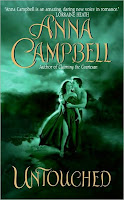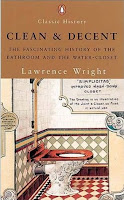

This week, in anticipation of Jane Austen’s birthday, we are each discussing one of her books. I chose Sense and Sensibility. At the end of the week, courtesy of Amanda, we’ll be giving away a copy of Jane Austen’s World to one lucky commenter. (Bertie’s rules apply)
Jane was born Dec 16, 1775, and Sense and Sensibility was her first published book. She wrote the first draft, called Elinor and Marianne, when she was nineteen years old but the book we read today was first published in 1811.
 from Wikipedia: Although the plot favors the value of sense over that of sensibility, the greatest emphasis is placed on the moral complexity of human affairs and on the need for enlarged and subtle thought and feeling in response to it.
from Wikipedia: Although the plot favors the value of sense over that of sensibility, the greatest emphasis is placed on the moral complexity of human affairs and on the need for enlarged and subtle thought and feeling in response to it.
It has been a few years since I’ve read any Jane Austen (being the worst-read of all the Riskies), so I came to Sense and Sensibility with fresh eyes. I discovered a few things:
 1. Sense and Sensibility is primarily a love story. A Romance. No matter the other themes of the book, romance is central. From the beginning we root for Elinor and Marianne to find love and have a happily ever after.
1. Sense and Sensibility is primarily a love story. A Romance. No matter the other themes of the book, romance is central. From the beginning we root for Elinor and Marianne to find love and have a happily ever after.
2. How masterfully Austen parallels Elinor’s love story with Marianne’s. They both fall in love with men they cannot have. They both have knowledge of the women the men must marry. What Marianne suffers openly and dramatically, Elinor conceals.
3. How deftly Austen can convey character-and with such wit and wisdom! It seems to take her a mere brush stroke. For example, of John Dashwood, Elinor and Marianne’s half-brother, comes this: “He had just compuction enough for having done nothing for his sisters himself, to be exceedingly anious that everybody else should do a great deal...” I’m in awe of her skill.

4. The Marianne of the book is much less appealing than how she was portrayed by Kate Winslet in the Sense and Sensibility movie. Marianne is convinced that acting upon her own feelings at all times is the way to go; therefore, she is often rude and thoughtless and ill-mannered, even if her heart is in the right place toward her sister. Marianne is selfish in this way, to feel her emotions may be expressed at the expense of others.
5. It occurs to me that, in the end, Marianne learns to be unselfish, to think of others rather than herself. In the end, she understands that Willoughby needed something she was unable to give him, so she could forgive him. I think she might have learned some of this unselfishness from Col. Brandon, who seems always to think of her needs over his own. And, of course, from her sister, who is unselfishness personified.
6. Compared to most romance novels today, Austen’s writing is denser, wordier, and its revelations seem to be slipped in when you least expect them. There is a lot of what we would call “Telling,” but her prose still shines. You have to read it at a savoring pace, which was perfectly fine with me!
7. In Sense and Sensibility, Austen’s subplot takes center stage and the main romance is almost in the background. I see this book as Elinor’s story (although I’m sure that others could argue differently) and Elinor’s love story is a quiet one compared to the drama of Marianne’s love story. I can see 19th century readers turning the page to see what happens to Marianne, but in the end, it is Elinor’s happy ending that resonates. At least for me.
8. Emma Thompson did a wonderful job of condensing the book into a movie. The book is, of course, richer and more detailed, especially of the minor characters, but Emma caught the spirit of the book.
Those are my random thoughts about Sense and Sensibility. What do you all think? What do you like about this story? What don’t you like about it, if anything?

Come back every day this week for more discussion on Austen’s books. If you want to know what we’ll be up to in the future, sign up for our newsletter at http://www.blogger.com/riskies@yahoo.comand put “newsletter” in the subject field. And don’t forget! The Vanishing Viscountess is available now on eharlequin and will be in stores Jan 1.










